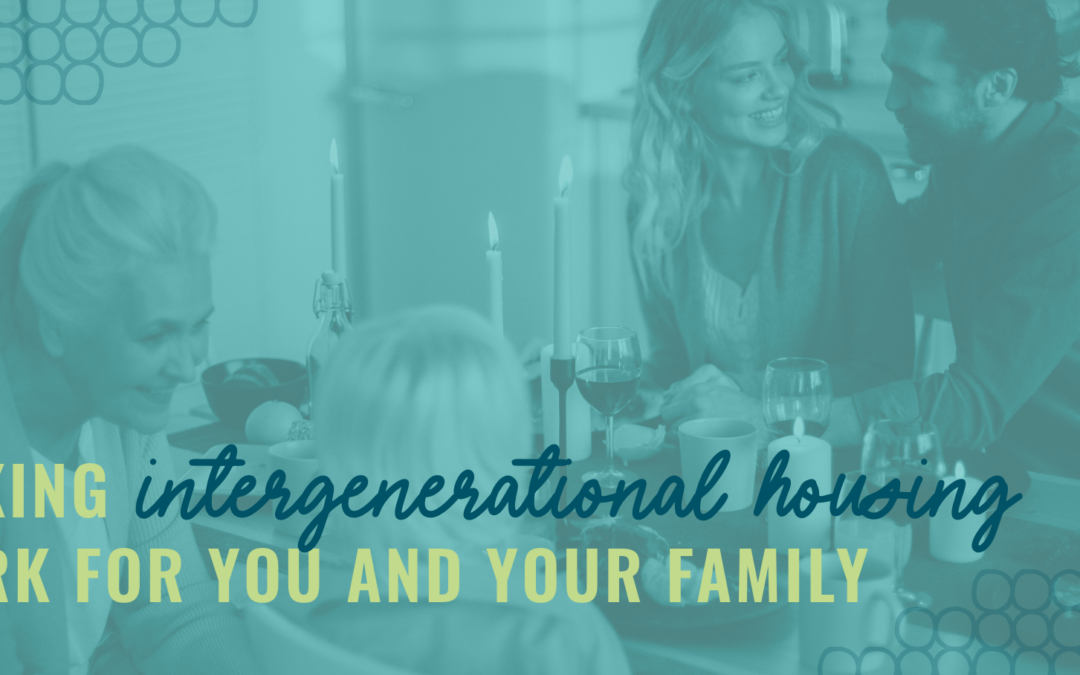Millennials get blamed for a lot — killing Applebee’s and cable TV was just the beginning. Every week, it seems like there’s a new story about some “important” tradition that Millennials (and Gen Zers) are choosing not to follow. And now, we’re seeing the latest trend that young people are bucking: living on their own.
Studies show that intergenerational housing is a growing trend, especially among young people. The number of U.S. adults living in multigenerational households (homes with two or more adult generations) has grown steadily over the past five decades. But the rise is especially noticeable among Millennials — in 2021, 25% of adults between ages 25 and 34 lived in multigenerational housing. This represents a 9% increase since 1971.
So, what does this really mean? Is the intergenerational housing trend another sign that young people are “ruining society”? Is it proof that young adults are just too lazy to strike out on their own? Or can it be a legit solution to a challenging economy and housing crisis that show no signs of quick recovery?
Finding intergenerational housing opportunities amid crisis
The truth is that multigenerational housing isn’t the end of the world. In fact, it’s been the norm in many European countries for decades. And let’s be real — this trend will probably keep growing in the U.S. as young people continue to find themselves priced out of the housing market and saddled with student debt.
Millennials lived through 9/11 and came of age during the 2008 Recession. They were encouraged to take out massive student loans as companies started requiring college degrees for entry-level jobs in every industry. And their adulthood has been defined by inflation, low-paying jobs, climate change, a global pandemic, market instability, and high living costs — all of which are largely out of their control.
It’s a large-scale problem, and quitting avocado toast won’t solve it. But multigenerational housing can be an excellent option that provides benefits for everyone involved.

Affordability isn’t the only benefit
Of course, the biggest driver of the intergenerational housing trend is money. For many young people, it’s just not possible to live on their own. In 2021, full-time workers making minimum wage couldn’t afford to rent a one-bedroom apartment in 93% of U.S. counties. The average minimum-wage employee in the U.S. would have to work 97 hours per week to afford a two-bedroom home.
So, many young people see moving home as the only solution. It gives them a chance to live within their means and maybe even save up for a down payment sometime in the future. Parents can also benefit from having their children move back home. It makes elder care easier, allowing older people to avoid retirement homes for many years. And Millennials can avoid the hefty cost of full-time childcare. Grandparents and grandchildren get a chance to build real relationships with each other.
Making a multigenerational household work

How do you make intergenerational housing a positive experience for everyone? It’s really all about respect, goodwill, and flexibility.
Before you move back home (or ask your parents to move in with you), set aside time to discuss the situation in depth. Give everyone a chance to offer their opinions and suggestions. Encourage each person to identify their desires and dealbreakers, and then work together to find a solution that works for everyone.
Communication is also key. Make sure responsibilities (financial and otherwise) are clearly defined, and speak up when things go awry. Finally, try to find some common hobbies you can all enjoy together. Maybe it’s something as simple as watching the football game on Sundays — the activity doesn’t matter as much as the intentional decision to enjoy time together.
Intergenerational housing shows resiliency, not laziness
Chances are we’ll still hear endless news stories about Millennials and Gen Zers upsetting the social norms of their parents. But that’s not really news — young people making different choices than their parents is a tale as old as time. And Millennials choosing multigenerational housing isn’t a sign of rebellion or laziness. It’s actually a smart financial move in a tough economy. And it can be a beneficial living situation for everyone, as long as it’s done right.
If you’re considering moving back home or inviting your parents to live with you, start by establishing some ground rules. Make sure everyone is on the same page in terms of personal boundaries, physical space, and daily schedule. Find a way to give everyone as much autonomy and privacy as possible. And then, just keep the lines of communication open. Make sure everyone feels like they can address concerns or make suggestions to improve the situation.
No one knows exactly what will happen with the economy going forward. Multigenerational housing may be here to stay. But that’s OK — it’s just another sign that young people are willing and able to adapt to new challenges.
Whether you’re thinking of changing up your housing situation or just want to manage your money better, we’re here to help. Check out our podcast, or switch out your boring spreadsheet for BudgetingBlocks™.


